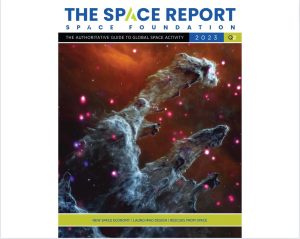The U.S.-based nonprofit organisation said this represented an 8% growth for the space industry. Within this, commercial growth – accounting for 78% of the total space economy – was recorded at nearly 8%, reaching $427.6 billion, and international defense spending rose to 45% of government space budgets.
Other headlines include the communications sector seeing the fastest growth with rising demand for satellite broadband services. It grew to $28 billion from $24 billion in 2021, an increase of more than 17%. Satellite manufacturing for the commercial sector also “boomed”, said the Space Foundation, with a 35% increase in satellites sent to orbit from 2021 to 2022.
Increased government space spending around the globe saw them spend an additional $9 billion on space, raising the percentage of defense spending in government budgets to 45% in 2022 compared to 41% in 2021. Note that much of the increase came as the United States increased its budgets for civil and military space programs to $69.5 billion, accounting for nearly 60% of global government space outlays.
Also, in the past decade, the global value of the wider space economy has grown by $260 billion (91%).
For the report, the organisation examined spending by 51 governments worldwide based on actual budgets and evaluated 11 subsectors of the commercial space industry, for the global value of the space economy.
“The Space Report forecasts continued growth in the space economy, and based on our conservative modeling [sic], we anticipate nearing the $800 billion mark within five years,” said Thomas Dorame, senior vp at Space Foundation. “This forecast is bolstered by the increase in 2023 space launch activity, which is well on pace to surpass the annual record set in 2022.”
To access the full paid-for report, you have to visit www.thespacereport.org.
You can read our coverage of last year’s Space Foundation report here.
See also: Space Foundation celebrates Symposium 2023, calls for Space as Critical Infrastructure

